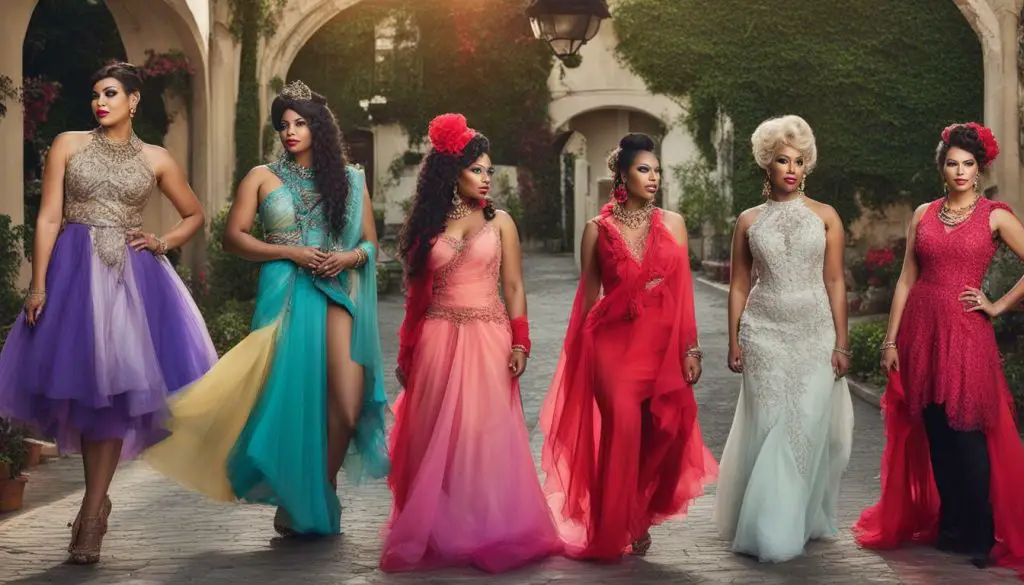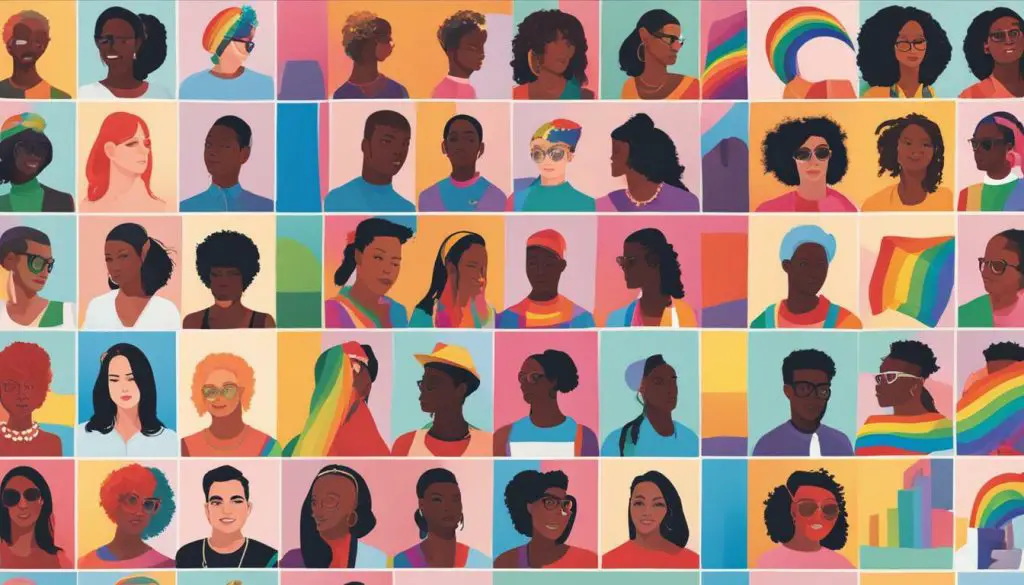In order to understand the differences between transgender and transvestite, it is essential to define these two terms. The term “transgender” refers to individuals whose gender identity does not align with the sex they were assigned at birth. This means that their internal sense of being male, female, or non-binary does not match the physical characteristics they were born with. On the other hand, “transvestite” refers to individuals who dress in clothing traditionally associated with the opposite gender, often for entertainment, self-expression, or sexual pleasure.
It is important to note that being transgender is about gender identity, which is distinct from sexual orientation. Transgender individuals may identify as any gender, whether male, female, non-binary, genderqueer, or any other gender identity. They may choose to undergo medical interventions or hormone therapy as part of their gender affirmation, although it is important to remember that not all transgender individuals seek or have access to medical interventions.
On the other hand, transvestite individuals typically do not undergo medical interventions related to their gender identity. Their act of dressing in clothing traditionally associated with the opposite gender is often a form of self-expression, art, or personal enjoyment. It is crucial to understand that being a transvestite does not necessarily indicate a person’s gender identity. They may identify as cisgender, transgender, or any other gender identity.
Historically, the term “transsexual” was used to describe transgender individuals who sought medical intervention for their gender affirmation. However, this term is now less commonly used, as it is considered outdated and medicalizing of transgender identities. Instead, the term “transgender” is more widely accepted as an inclusive and affirming term to describe those whose gender identity differs from their assigned sex at birth.
When discussing transgender and transvestite individuals, it is essential to use inclusive and respectful language. This helps create a safe and welcoming environment for people of all gender identities and expressions. By clarifying the definitions of these terms, we can promote greater understanding and acceptance within society as a whole.
Definition of Transgender and Transvestite
Let’s start by examining the definitions of transgender and transvestite. The term “transgender” refers to individuals whose gender identity does not align with the sex they were assigned at birth. This means that someone who is assigned male at birth may identify and live as female, and vice versa. However, it’s important to note that gender identity is separate from sexual orientation, as transgender individuals can have any sexual orientation.
On the other hand, “transvestite” refers to individuals who dress in clothing traditionally associated with the opposite gender. This can be for a variety of reasons, including entertainment, self-expression, or sexual pleasure. Transvestites may or may not have a gender identity that aligns with the opposite gender they present as.
Transgender individuals may identify as male, female, non-binary, genderqueer, or any other gender identity. They may choose to medically transition through hormone therapy or surgeries, but this is not a requirement to identify as transgender. The term “transsexual,” although less commonly used nowadays, historically referred to transgender individuals seeking medical intervention for their gender affirmation.
It is important to use inclusive and respectful language when discussing transgender and transvestite identities. This includes using the individual’s preferred pronouns and avoiding derogatory or offensive terms. Understanding the definitions and distinctions between transgender and transvestite is crucial for fostering a more accepting and inclusive society for all individuals, regardless of their gender identity or expression.
Differences between Transgender and Transvestite
While transgender and transvestite may share some similarities, there are significant differences that set them apart. It is important to understand these differences in order to have a more nuanced understanding of gender identity and expression.
Transgender individuals are those whose gender identity does not align with the sex they were assigned at birth. This means that someone who was assigned male at birth but identifies as female is considered transgender. Gender identity is a deeply personal and internal experience, and transgender individuals may identify as male, female, non-binary, genderqueer, or any other gender identity. It is crucial to respect and use the correct pronouns and terms when referring to transgender individuals.
On the other hand, transvestite refers to individuals who dress in clothing traditionally associated with the opposite gender for a variety of reasons. This can include entertainment, self-expression, or sexual pleasure. Unlike transgender individuals, transvestites may not necessarily identify as a gender different from their assigned sex at birth. It is important to note that being a transvestite does not determine one’s gender identity but rather relates to the expression of their gender through clothing and appearance.
Key Differences:
- Transgender individuals have a gender identity that differs from their assigned sex at birth, while transvestites may or may not identify as a gender different from their assigned sex.
- Transgender individuals may use hormones or undergo surgeries as part of their gender affirmation journey, while transvestites typically do not seek medical intervention.
- Transgender individuals may experience gender dysphoria, a distressing disconnect between their gender identity and their assigned sex, while transvestites do not necessarily experience this.
Understanding the differences between transgender and transvestite is vital to promoting inclusivity and respect for all individuals. Embracing diverse gender identities and expressions fosters a more accepting society where everyone can live authentically and thrive.

| Transgender | Transvestite |
|---|---|
| Gender identity differs from assigned sex at birth | Gender identity may or may not differ from assigned sex at birth |
| May use hormones or undergo surgeries for gender affirmation | Typically does not seek medical intervention |
| May experience gender dysphoria | Does not necessarily experience gender dysphoria |
Exploring LGBT Terminology
Understanding transgender and transvestite is part of a broader comprehension of LGBT terminology. Within the LGBTQ+ community, there is a rich diversity of gender identities and expressions, each deserving of respect and understanding. Here, we will explore key terms related to gender, including transgender and transvestite, to promote inclusivity and knowledge.
When discussing LGBT terminology, it’s important to clarify the meaning of transgender and transvestite. Transgender individuals are those whose gender identity differs from the sex they were assigned at birth. They may identify as male, female, non-binary, genderqueer, or any other gender identity. Transvestite, on the other hand, refers to individuals who dress in clothing traditionally associated with the opposite gender for various reasons, such as entertainment, self-expression, or sexual pleasure.
It’s crucial to note that gender identity is separate from sexual orientation. While transgender individuals may identify as heterosexual, homosexual, bisexual, or any other sexual orientation, their gender identity remains distinct. Additionally, the term “transsexual,” although less commonly used, historically referred to transgender individuals seeking medical intervention, such as hormone therapy or gender-affirming surgery, to align their physical appearance with their gender identity.

| LGBT Terminology | Definition |
|---|---|
| Transgender | Individuals whose gender identity differs from their assigned sex at birth. |
| Transvestite | Individuals who dress in clothing traditionally associated with the opposite gender for entertainment, self-expression, or sexual pleasure. |
| Transsexual | A less commonly used term historically referring to transgender individuals seeking medical intervention for gender affirmation. |
| Gender Identity | One’s deeply felt sense of being male, female, or another gender, which may or may not align with their assigned sex at birth. |
| Sexual Orientation | An enduring emotional, romantic, or sexual attraction towards individuals of a specific gender or genders. |
By familiarizing ourselves with these terms and promoting inclusive language, we can help foster a more accepting society for all individuals, regardless of their gender identity. Remember, everyone deserves to be respected and affirmed in their true selves.
Misconceptions and Stereotypes
Unfortunately, there are numerous misconceptions and stereotypes surrounding transgender and transvestite individuals that need to be debunked. These misconceptions often stem from a lack of understanding and ignorance about the complexities of gender identity and expression.
One common misconception is that transgender and transvestite individuals are the same. However, this is not the case. Transgender individuals have a gender identity that differs from the sex assigned to them at birth. They may identify as male, female, non-binary, genderqueer, or any other gender identity. On the other hand, transvestite individuals dress in clothing traditionally associated with the opposite gender for various reasons, such as entertainment, self-expression, or sexual pleasure.
Another stereotype is that being transgender or transvestite is a choice or a phase. In reality, gender identity is deeply personal and inherent to an individual’s sense of self. It is not a choice, and it cannot be changed or suppressed. Similarly, transvestism is a form of self-expression and does not indicate any underlying psychological or sexual pathology.

| Myth | Fact |
|---|---|
| Transgender and transvestite individuals are the same. | Transgender and transvestite are distinct terms with different meanings. |
| Being transgender or transvestite is a choice. | Gender identity and transvestism are innate aspects of an individual’s identity. |
| Transgender and transvestite individuals are mentally ill. | Being transgender or transvestite is not a mental illness. |
| Transgender and transvestite individuals are seeking attention. | Gender identity and transvestism are authentic expressions of self, not attention-seeking behaviors. |
It is crucial to challenge these misconceptions and stereotypes by fostering education and promoting understanding. Creating a supportive and inclusive environment for transgender and transvestite individuals is essential for their well-being and overall societal progress.
Conclusion
In conclusion, transgender and transvestite are not synonyms, but rather terms that describe distinct aspects of gender identity and expression. The term “transgender” refers to individuals whose gender identity does not align with the sex they were assigned at birth. This can include individuals who identify as male, female, non-binary, genderqueer, or any other gender identity. Gender identity is separate from sexual orientation, meaning that transgender individuals may identify as heterosexual, homosexual, bisexual, or any other sexual orientation.
On the other hand, “transvestite” refers to individuals who dress in clothing traditionally associated with the opposite gender for various reasons. This can include entertainment purposes, self-expression, or sexual pleasure. Transvestite individuals may identify with their assigned birth gender or may also identify as transgender. It is important to note that the term “transvestite” has been historically associated with fetishism, but it is now recognized as a valid expression of one’s gender identity.
When discussing these topics, it is crucial to use inclusive and respectful language. Understanding the distinctions between transgender and transvestite, as well as the larger spectrum of gender and sexual identities within the LGBTQ+ community, promotes empathy, tolerance, and acceptance. By challenging misconceptions and stereotypes, we can create a more inclusive society that celebrates the diversity of human experiences and expressions.
FAQ
Are transgender and transvestite synonyms?
No, transgender and transvestite are not synonymous. Transgender refers to individuals whose gender identity does not align with the sex they were assigned at birth, while transvestite refers to those who dress in clothing traditionally associated with the opposite gender for entertainment, self-expression, or sexual pleasure.
What is the definition of transgender?
Transgender individuals are those whose gender identity does not align with the sex they were assigned at birth. They may identify as male, female, non-binary, genderqueer, or any other gender identity.
What is the definition of transvestite?
Transvestite individuals are those who dress in clothing traditionally associated with the opposite gender for entertainment, self-expression, or sexual pleasure.
What are the differences between transgender and transvestite?
Transgender individuals have a gender identity that does not align with the sex they were assigned at birth, while transvestite individuals dress in clothing associated with the opposite gender. Transgender identity is about gender identity, while transvestite is about expression through clothing.
What is LGBT terminology?
LGBT terminology encompasses a range of terms related to gender and sexual identities. It includes terms like transgender and transvestite, as well as lesbian, gay, bisexual, and other identities within the LGBTQ+ community.
What are some common misconceptions and stereotypes about transgender and transvestite individuals?
Common misconceptions and stereotypes include the belief that being transgender or transvestite is a choice, that it is related to sexual orientation, or that it is a mental illness. It is important to address these misconceptions and promote understanding.
Conclusion
In conclusion, transgender and transvestite are not synonymous terms. Transgender individuals have a gender identity that does not align with the sex they were assigned at birth, while transvestite individuals dress in clothing associated with the opposite gender. It is essential to use inclusive and respectful language when discussing these identities.